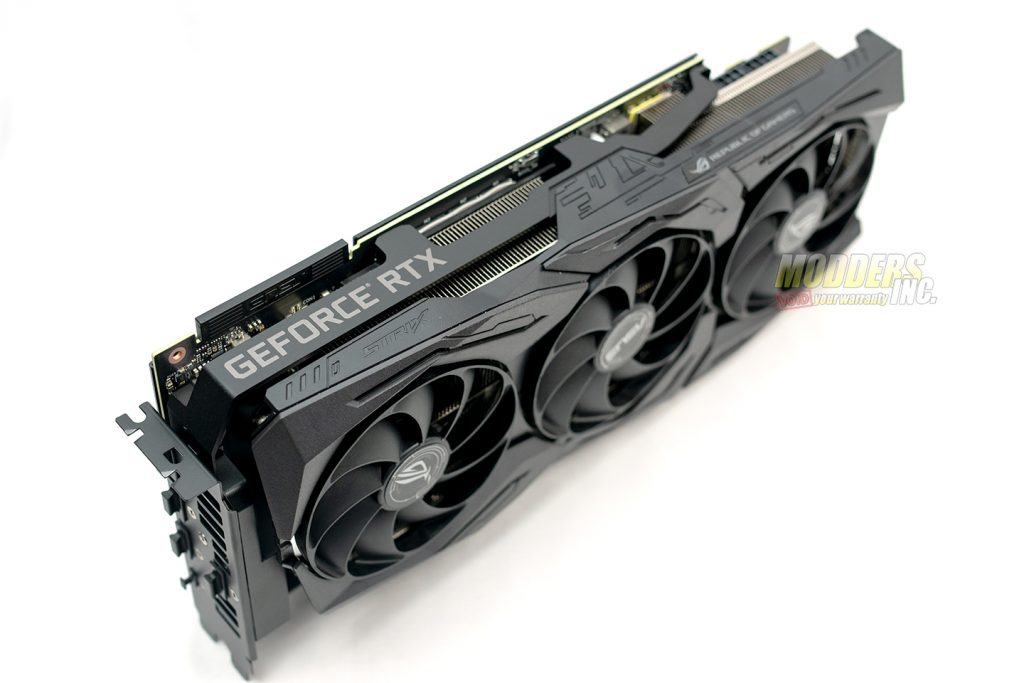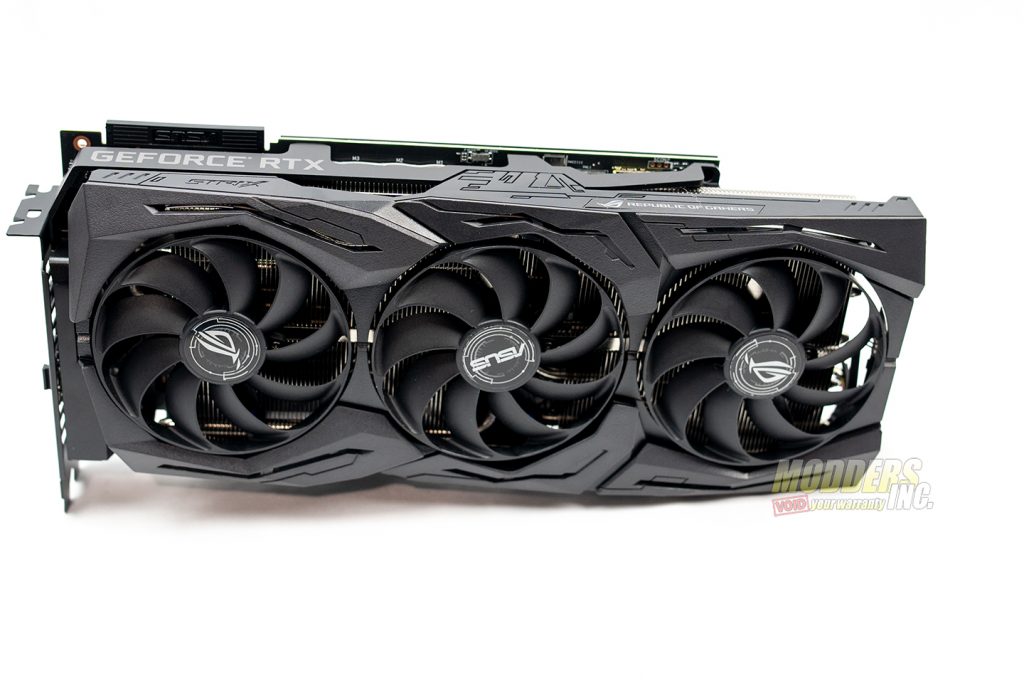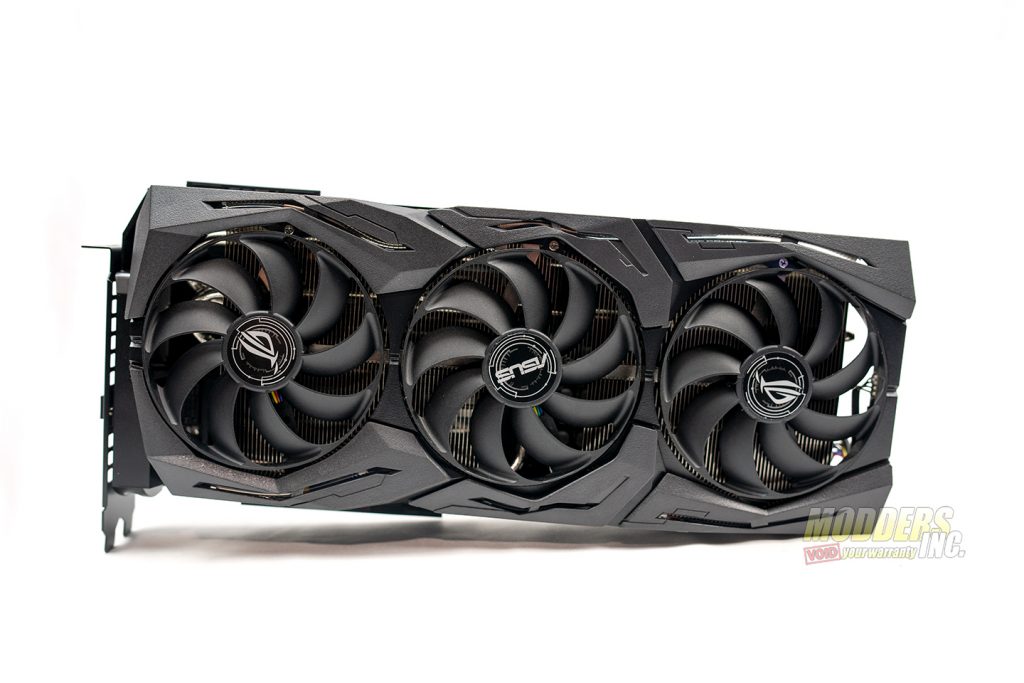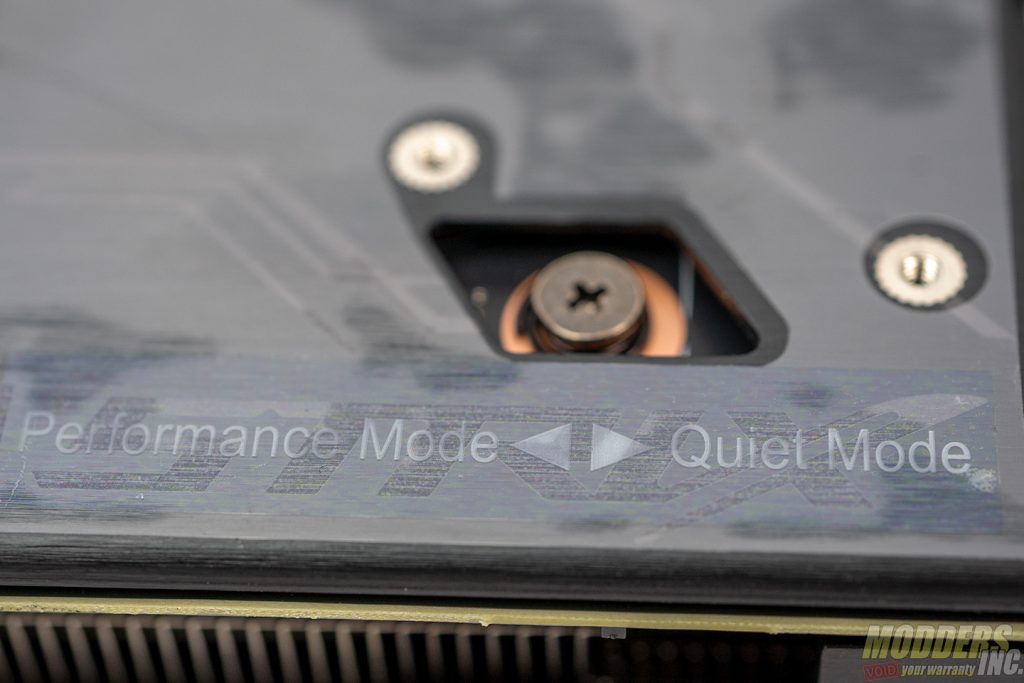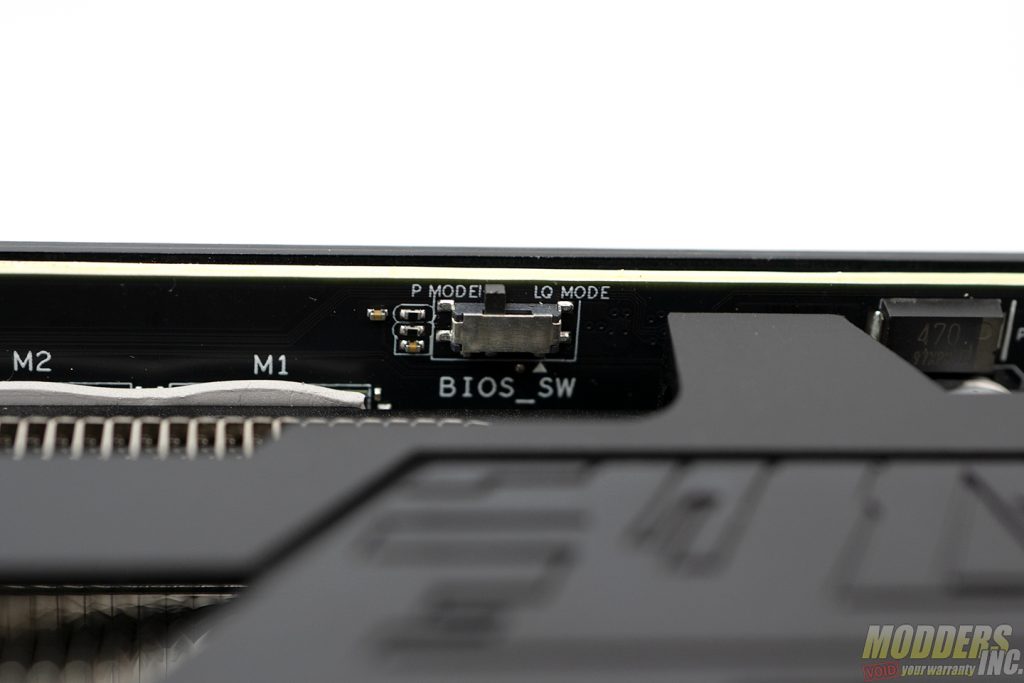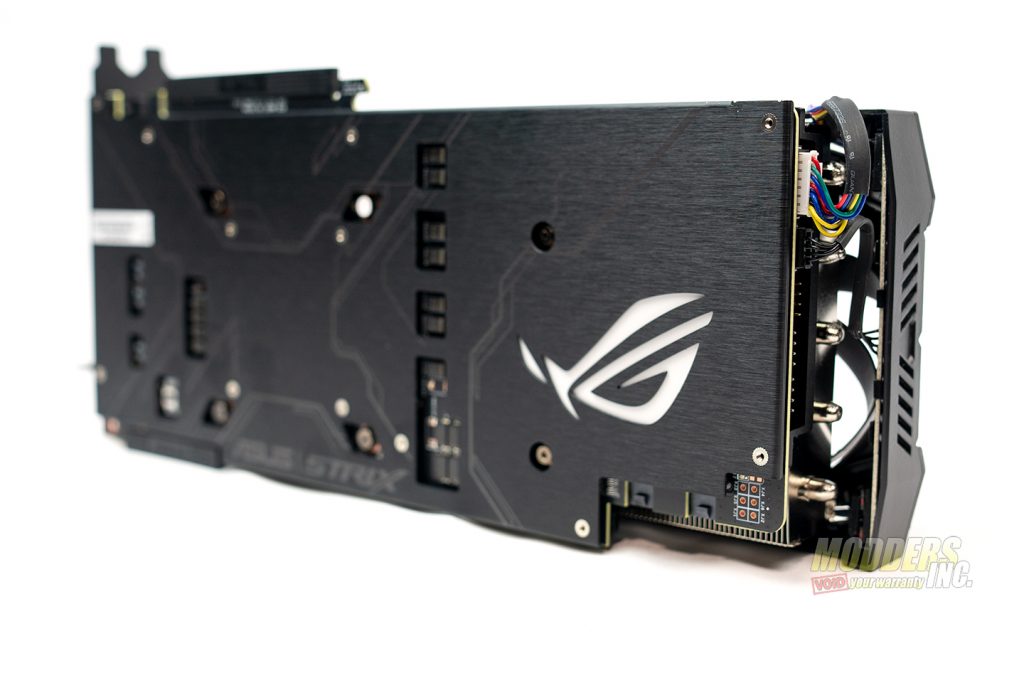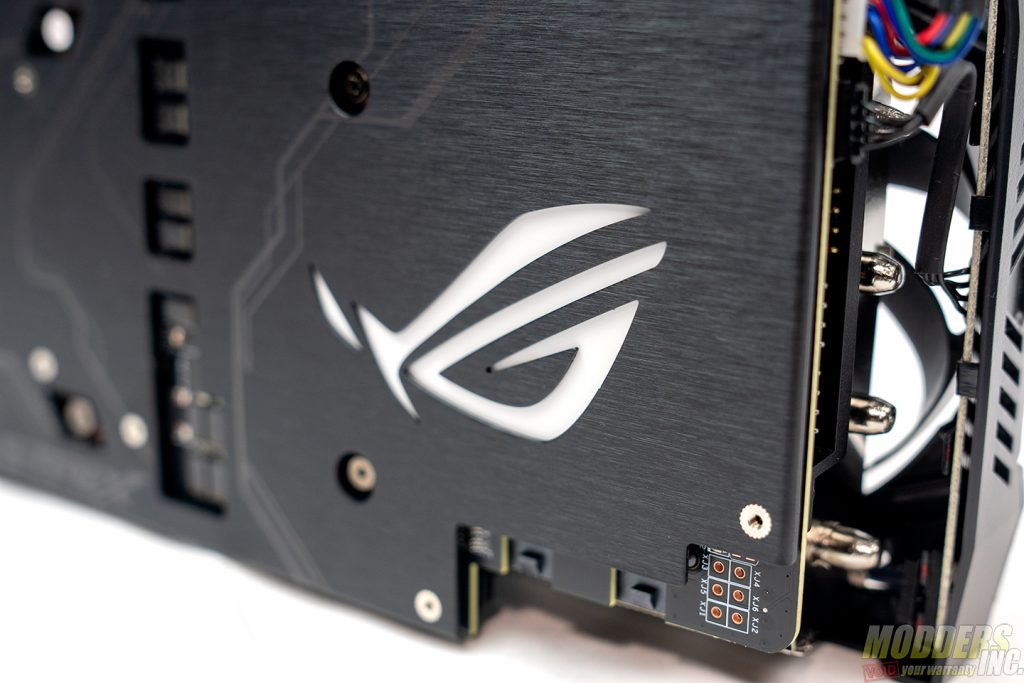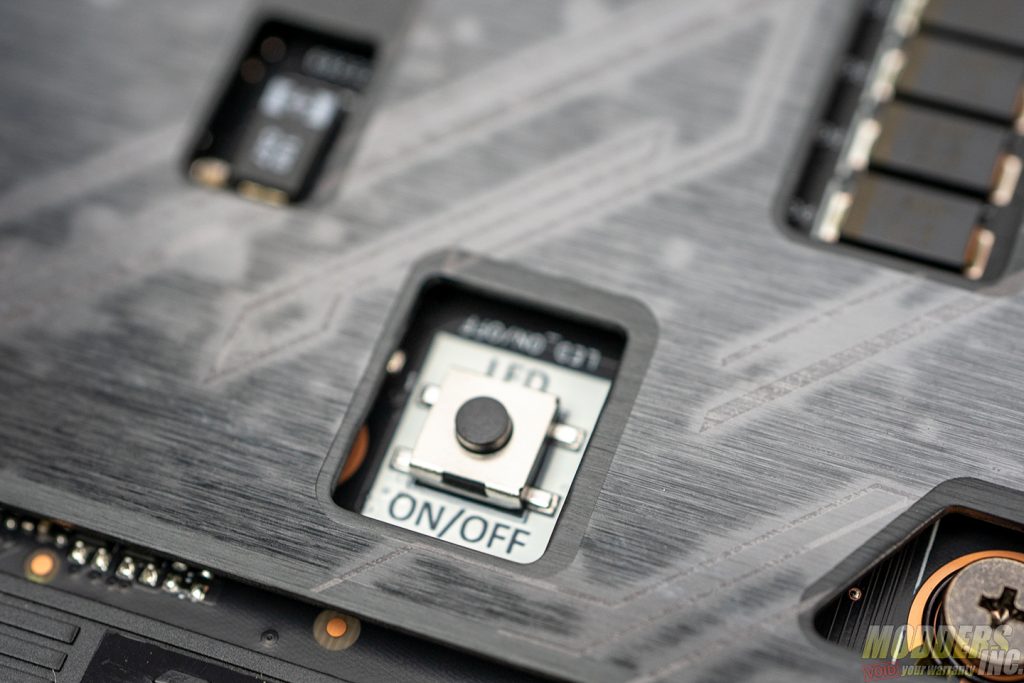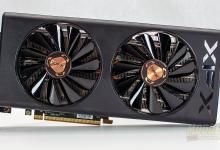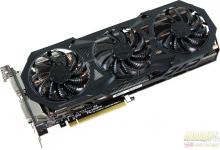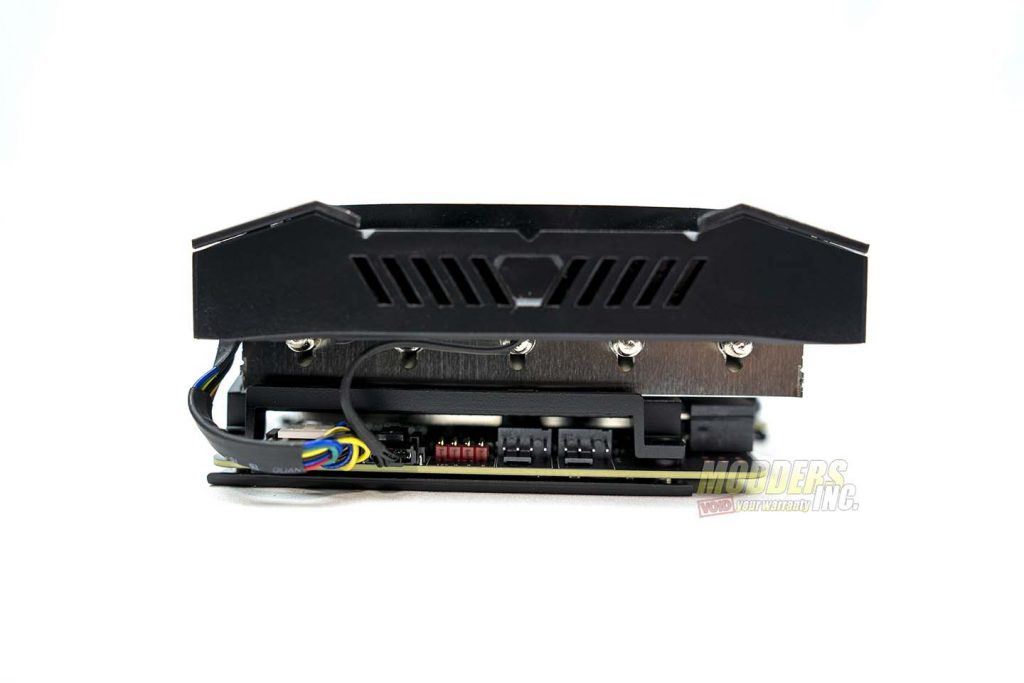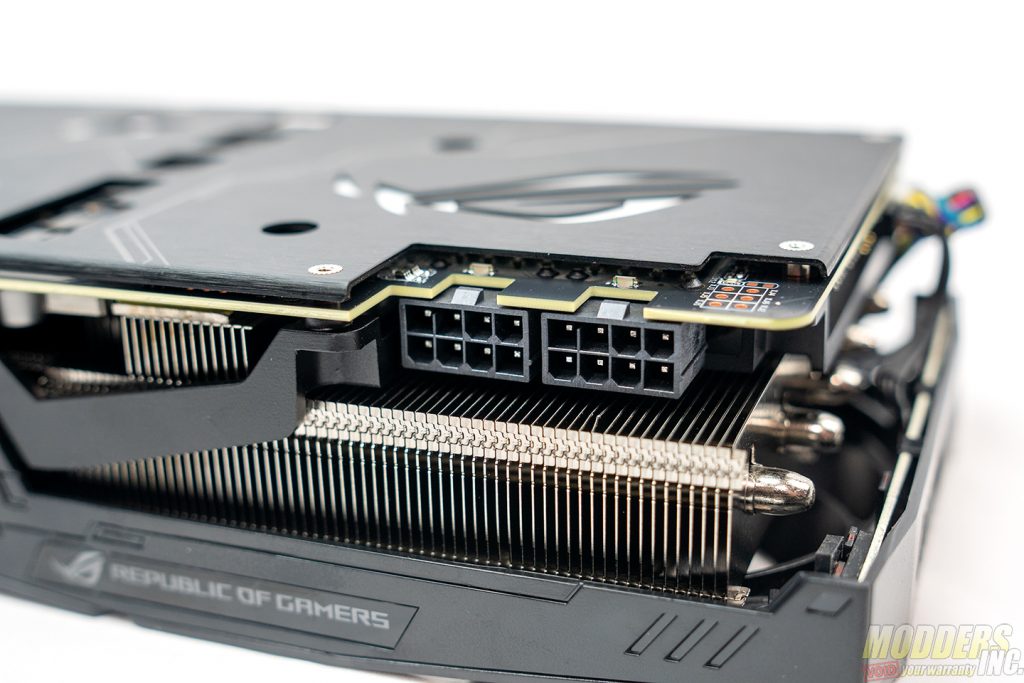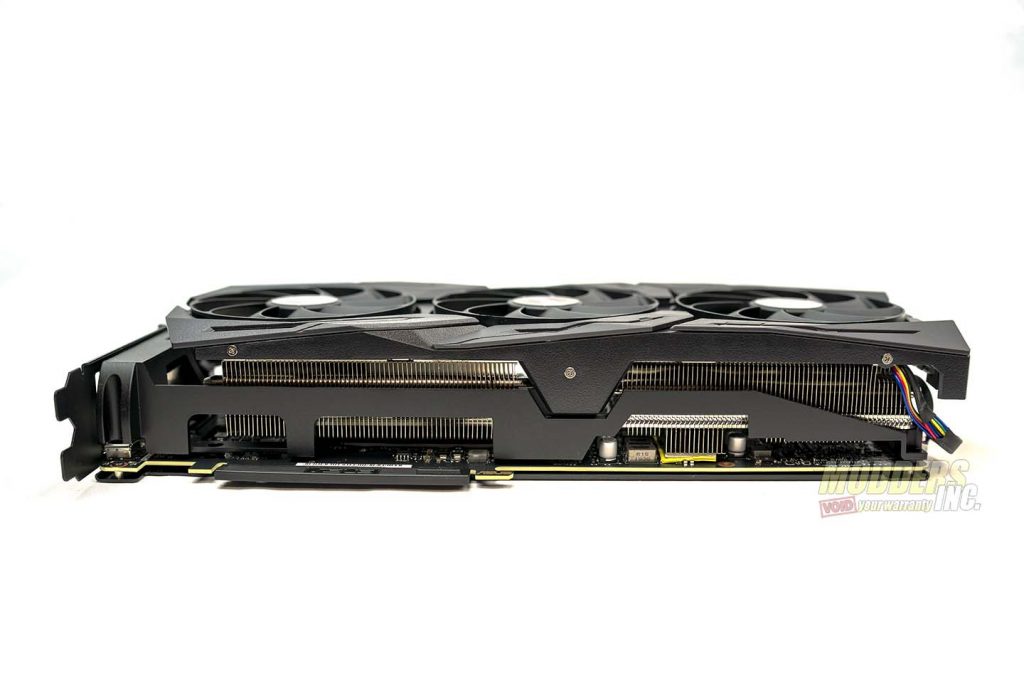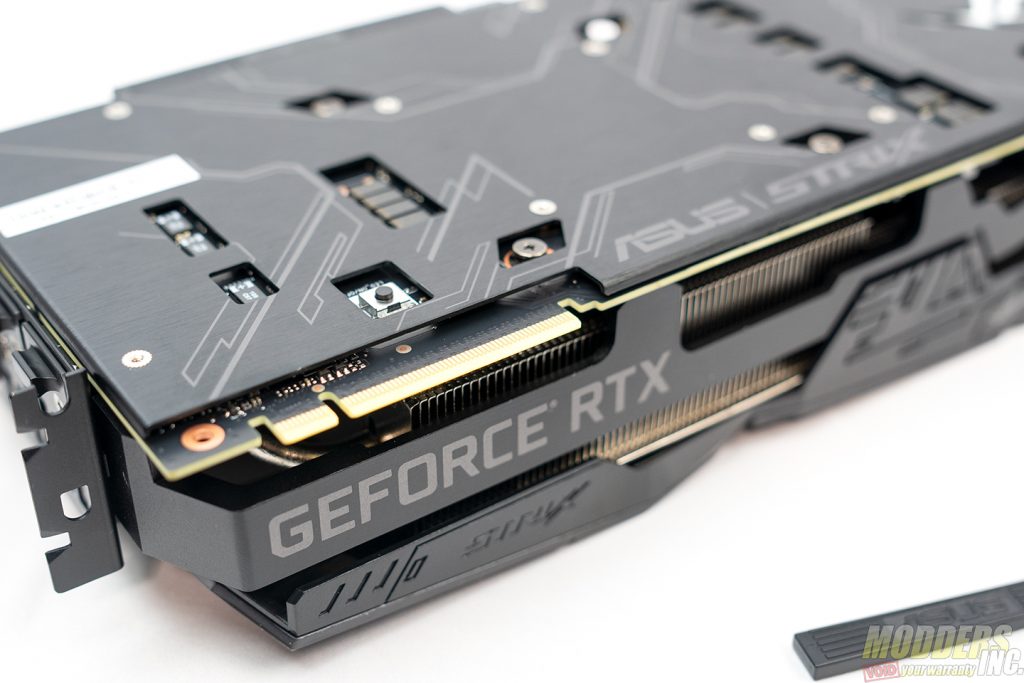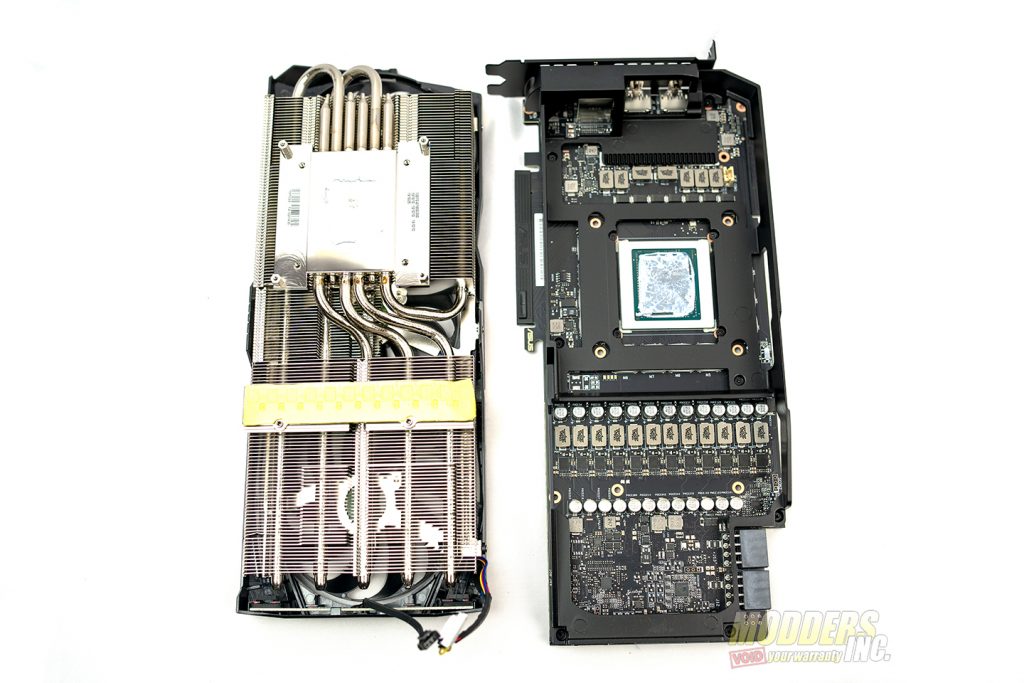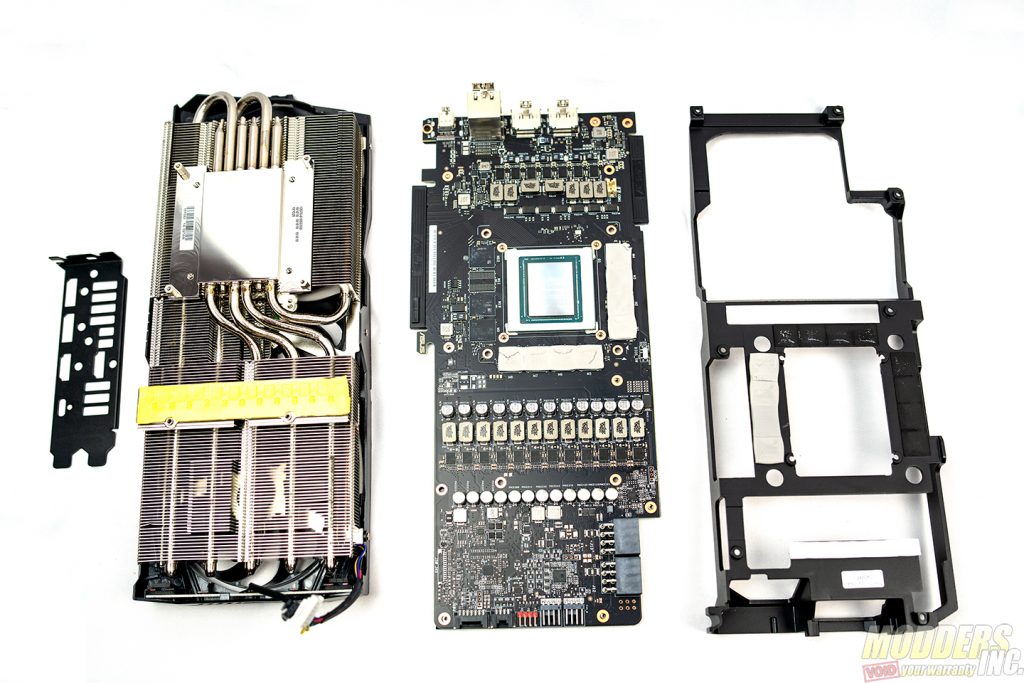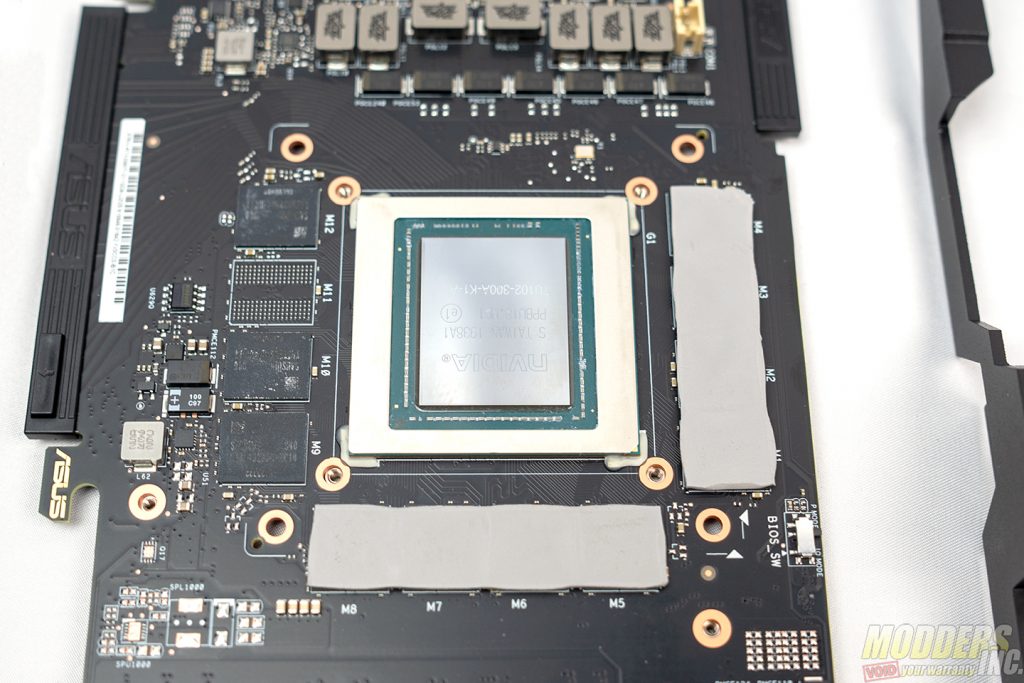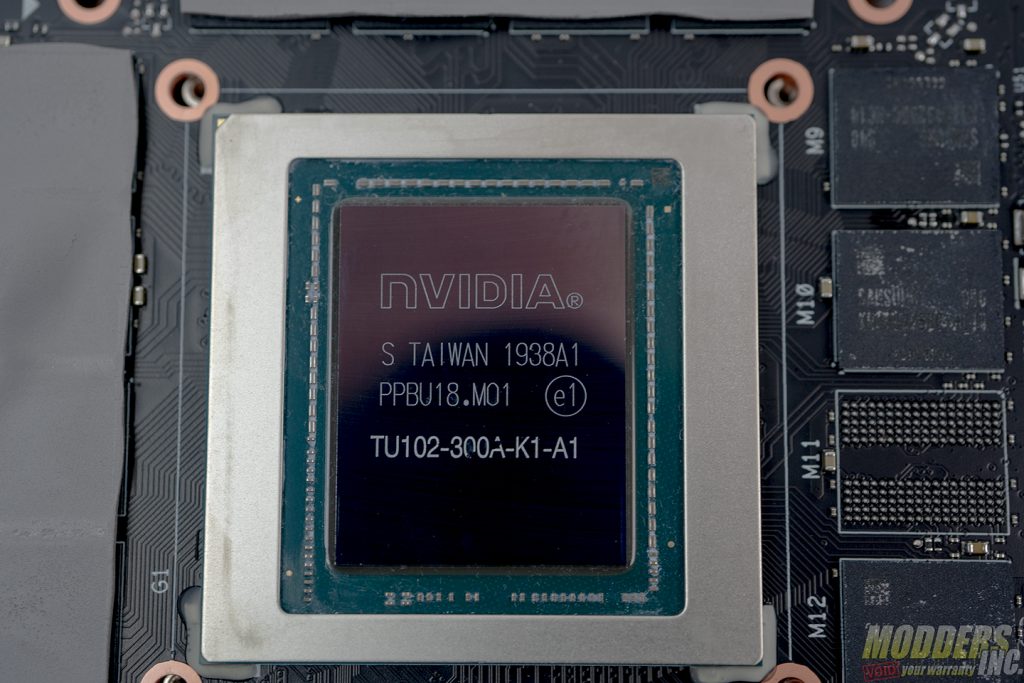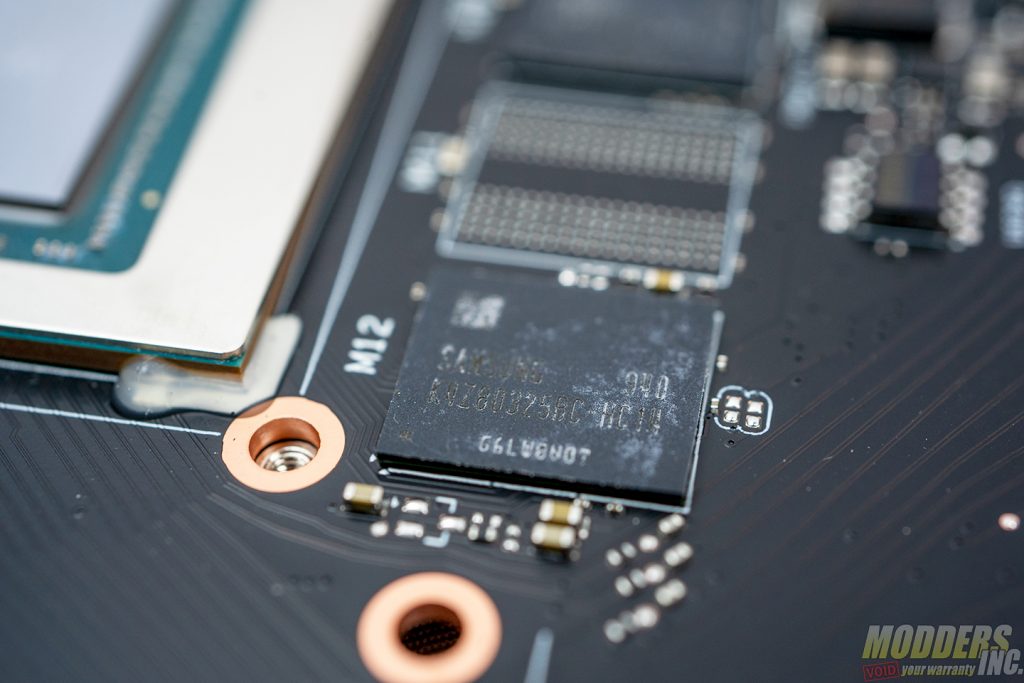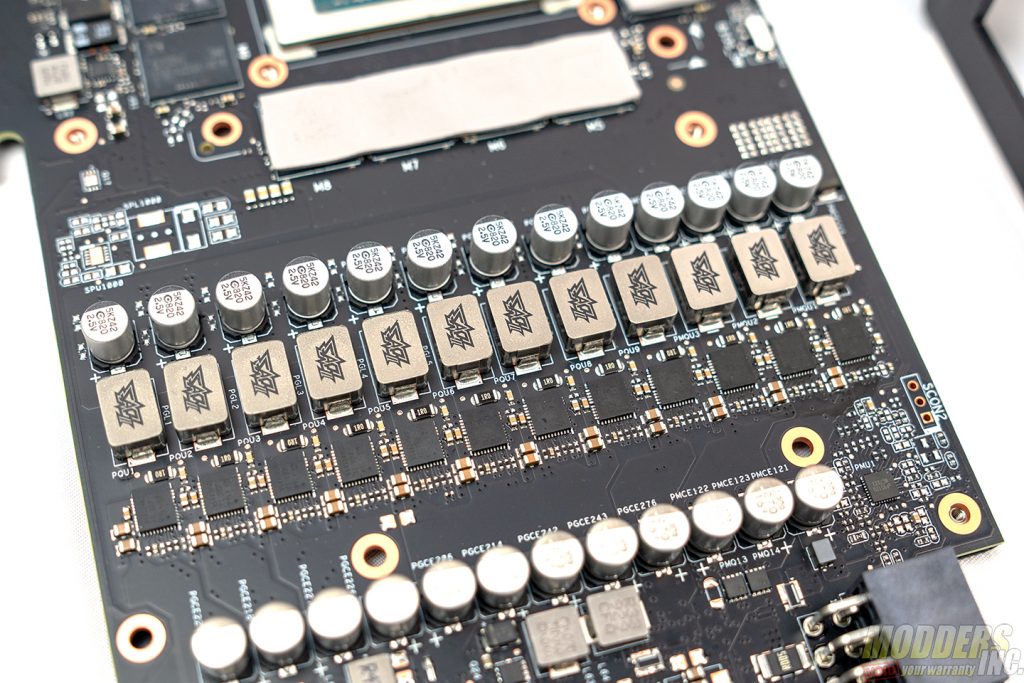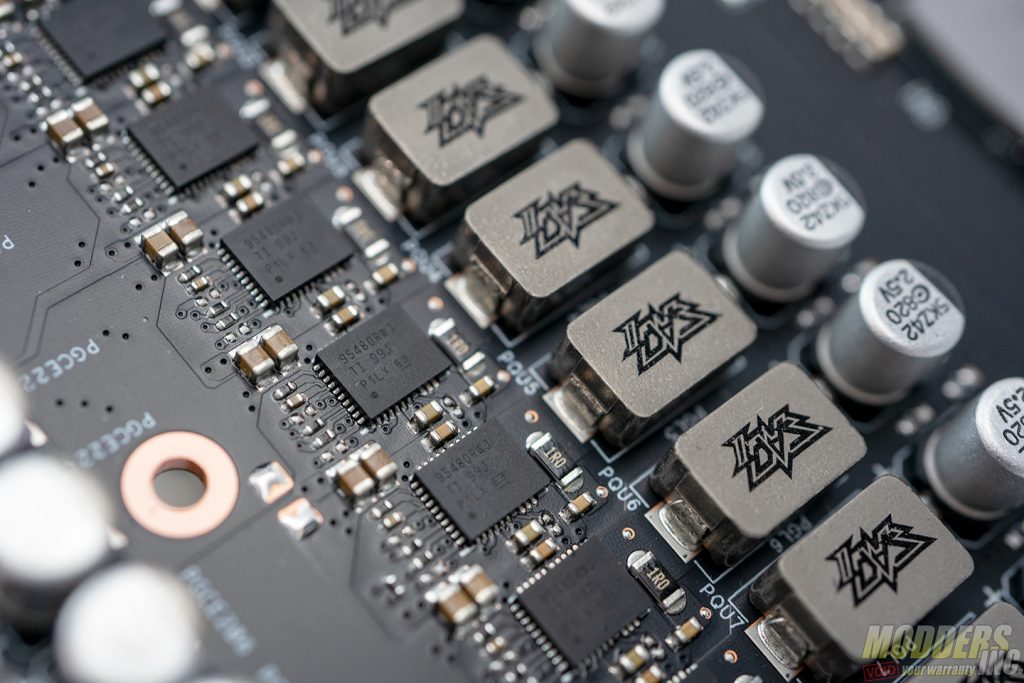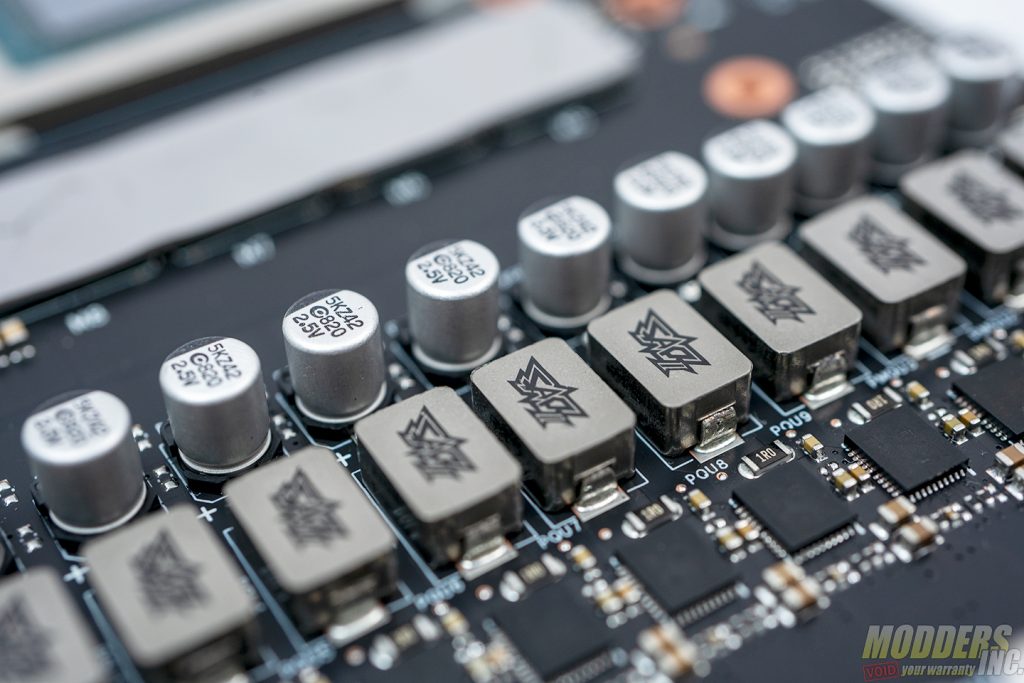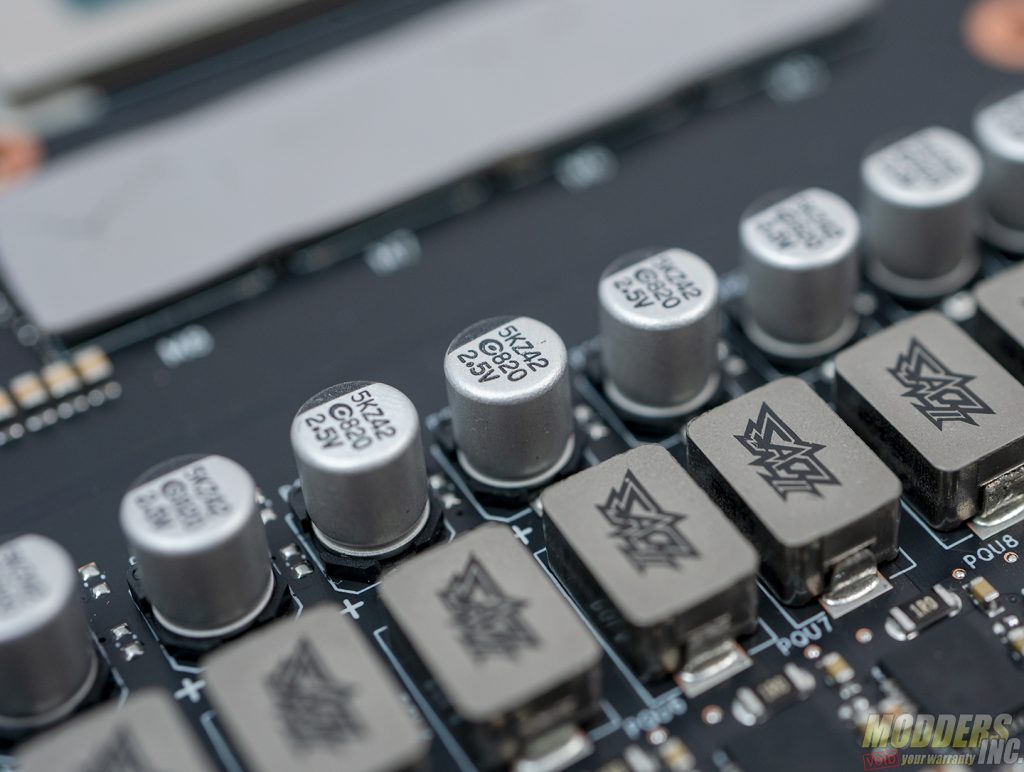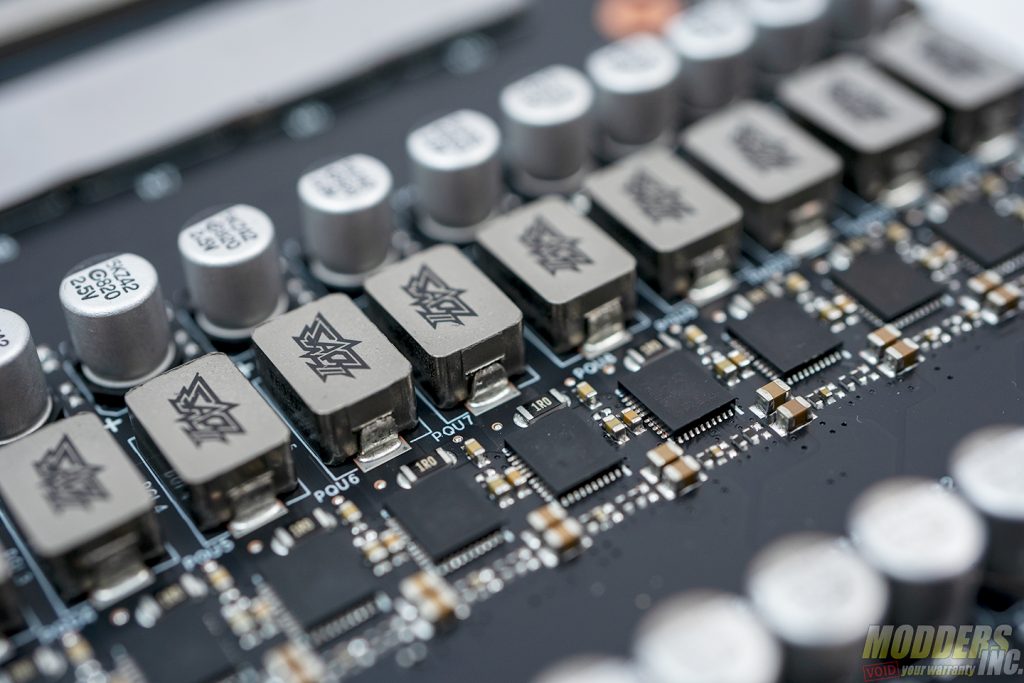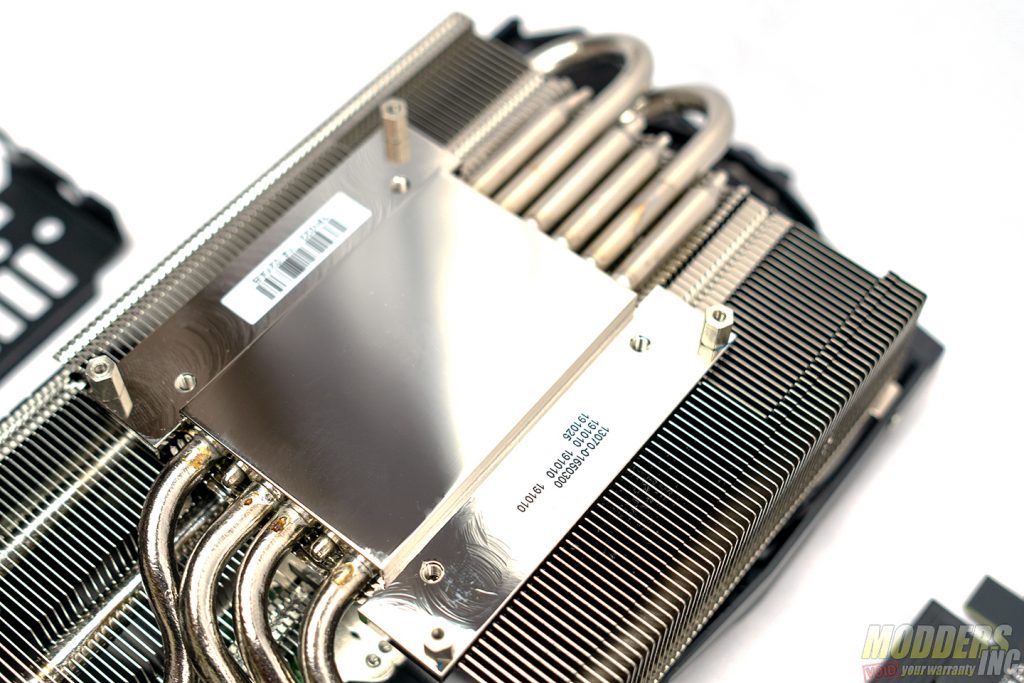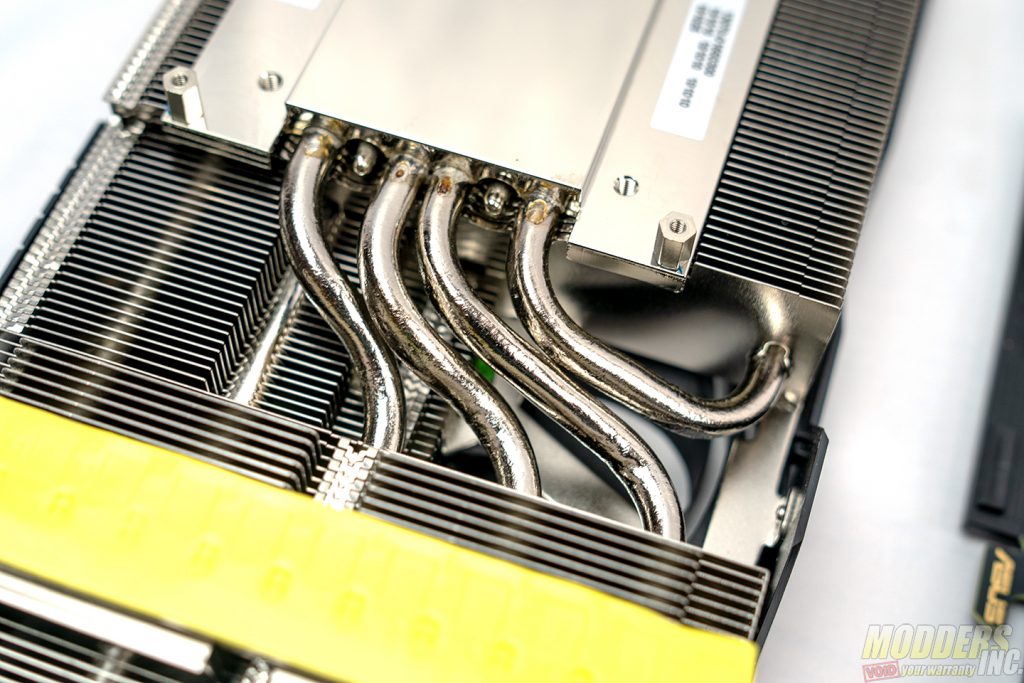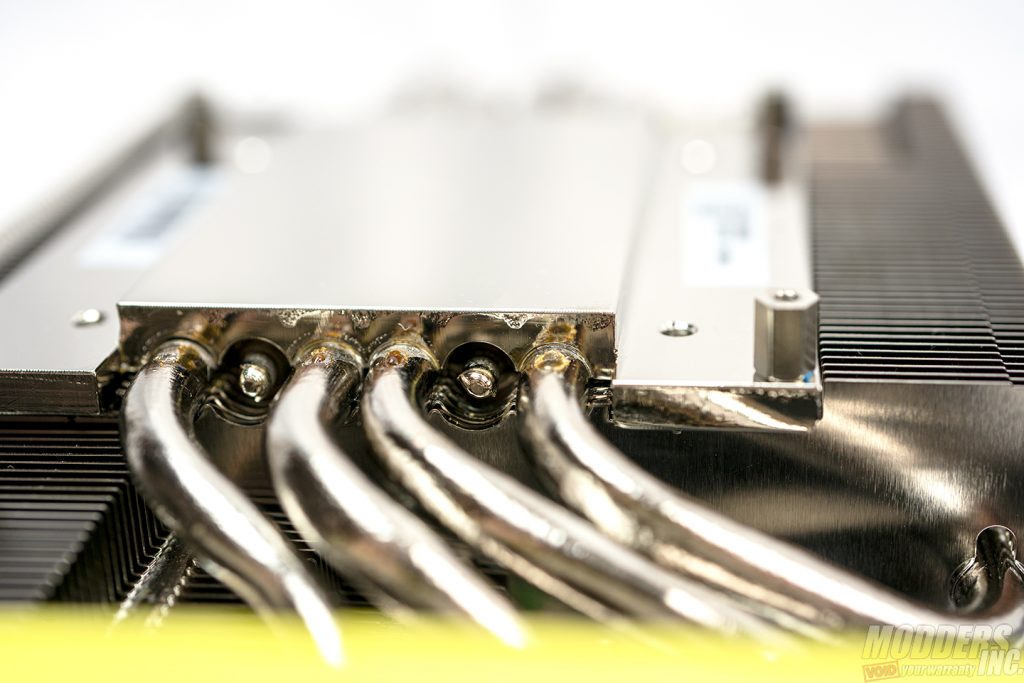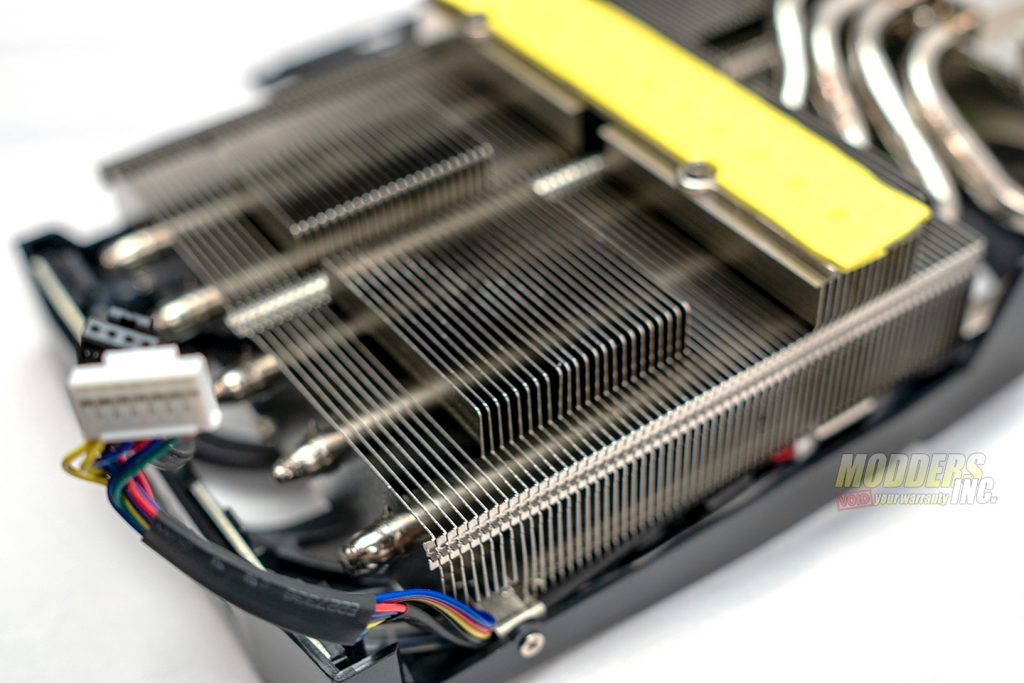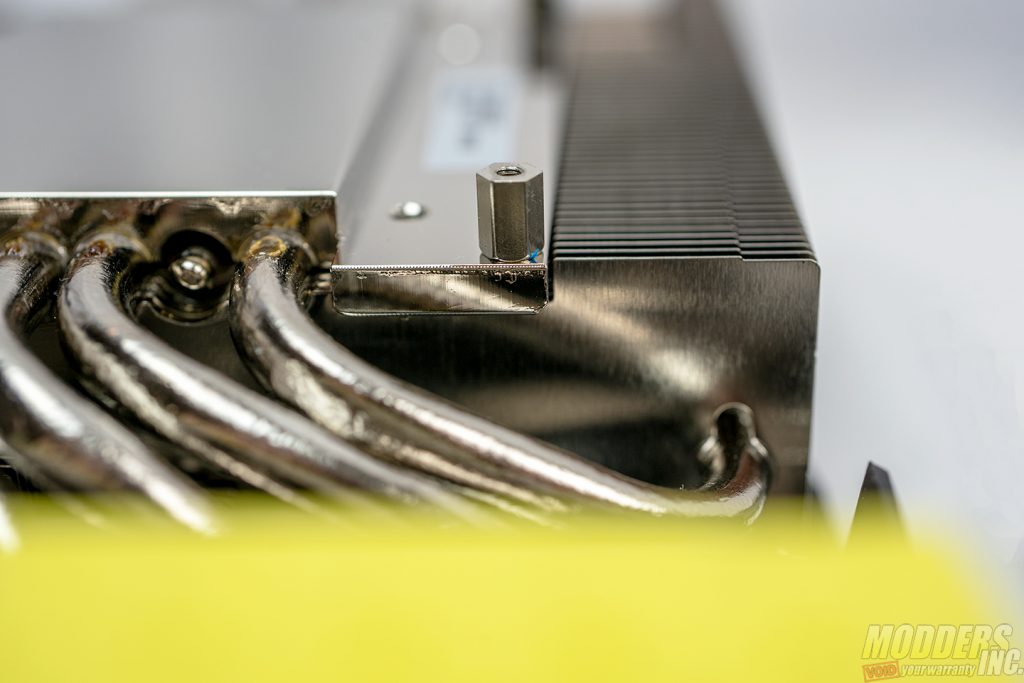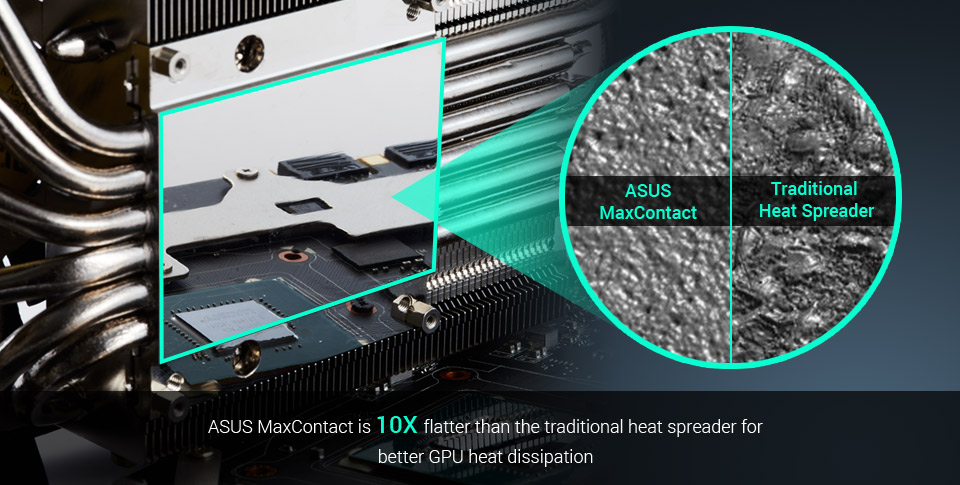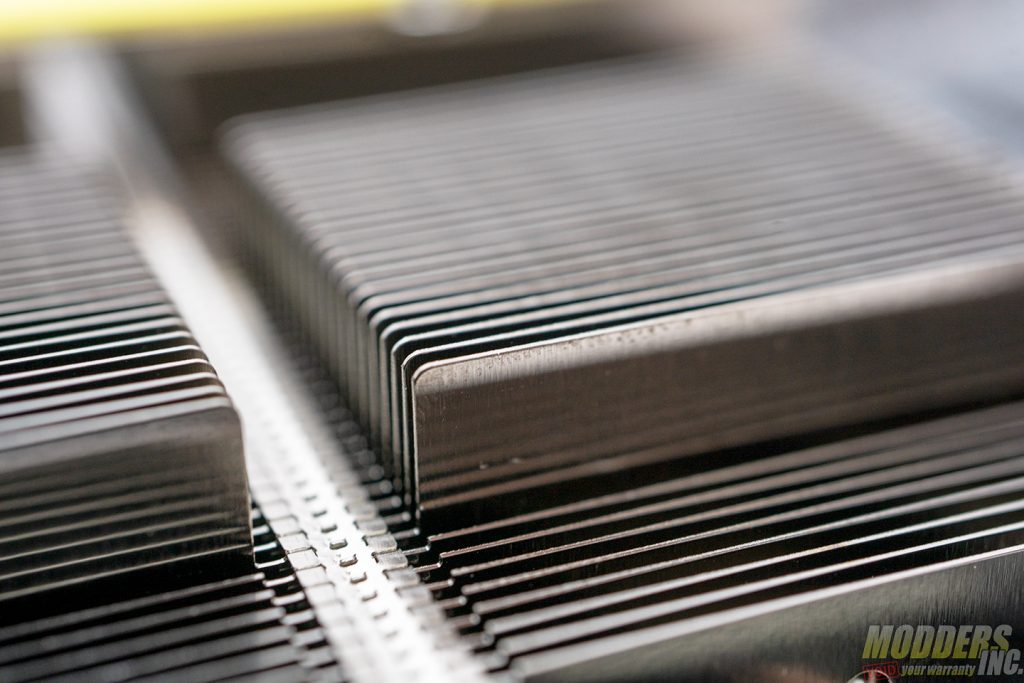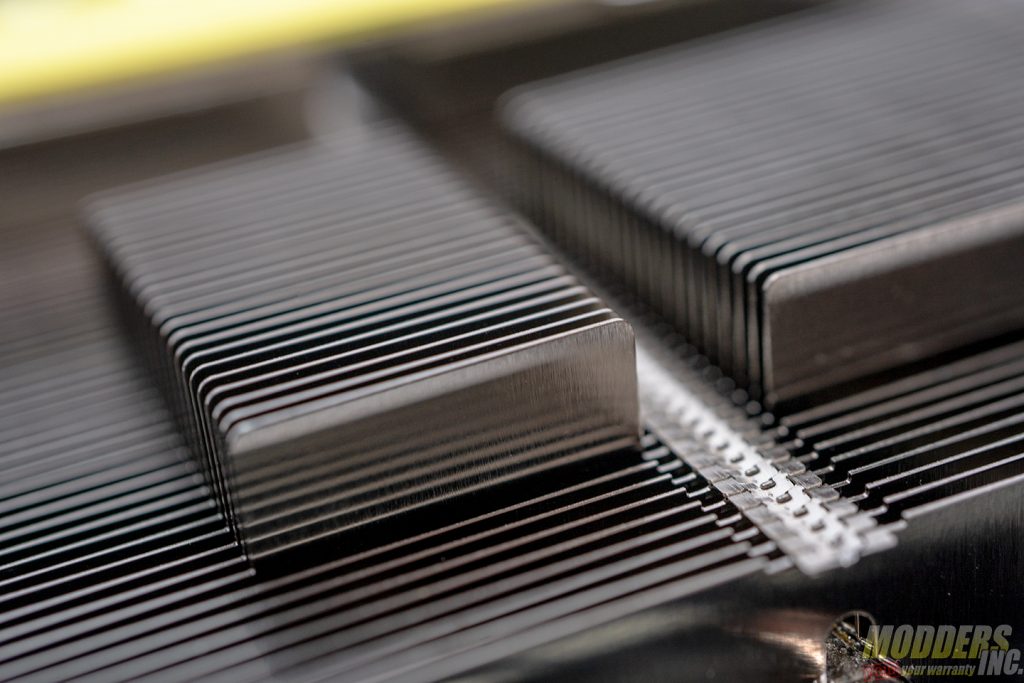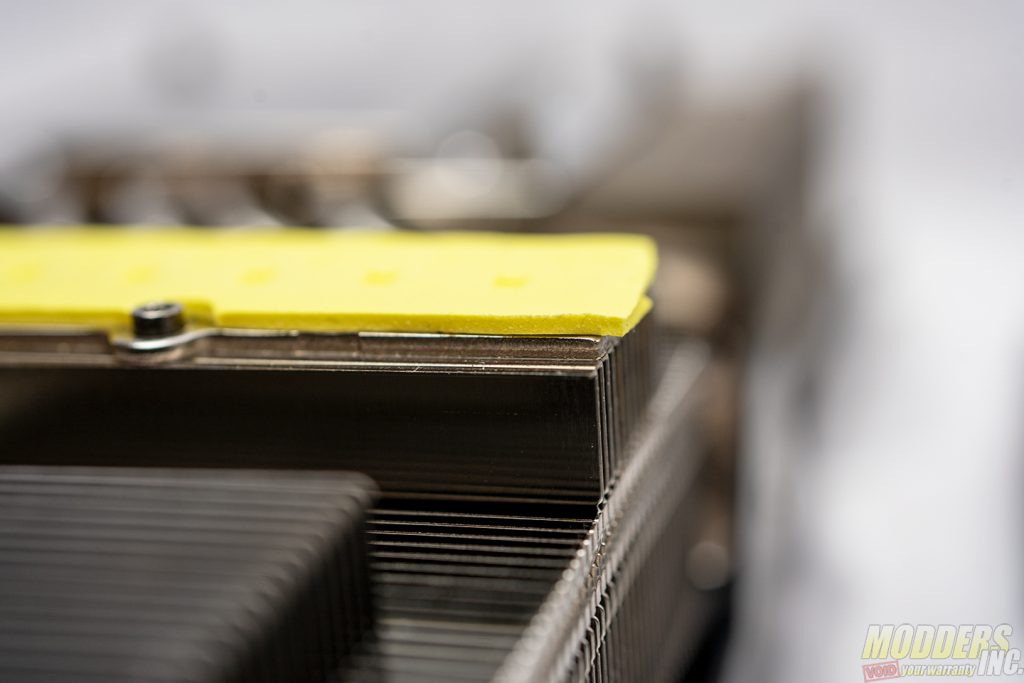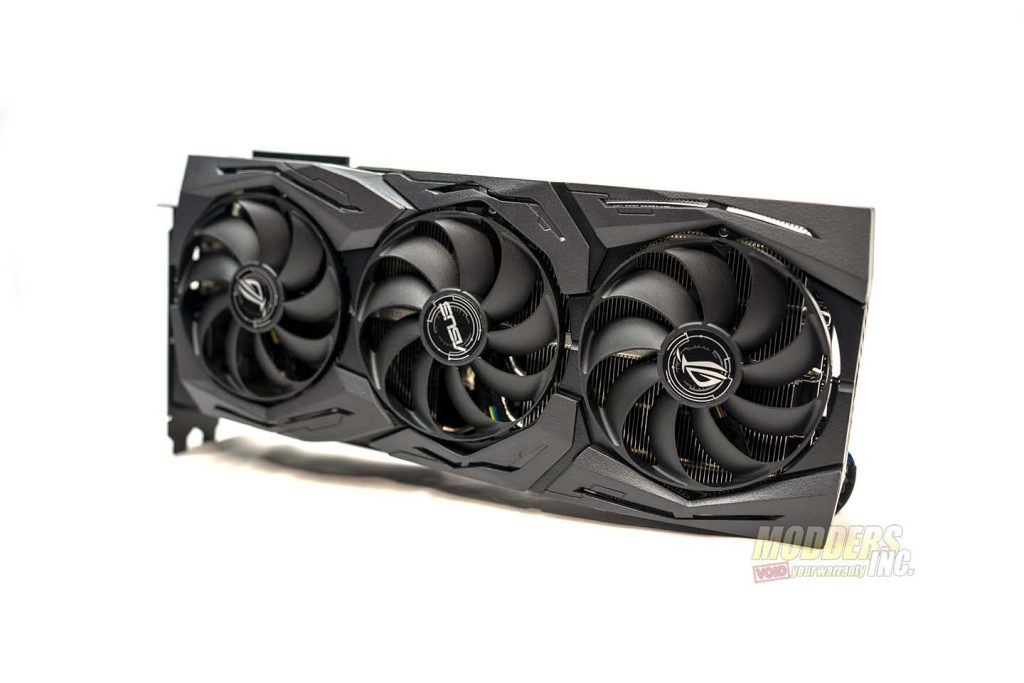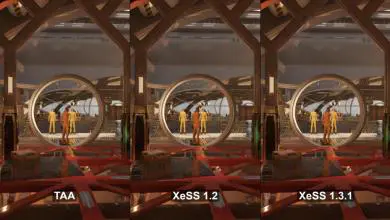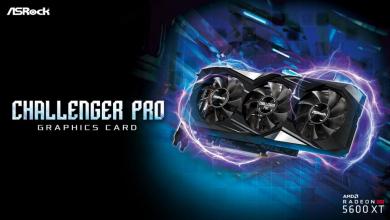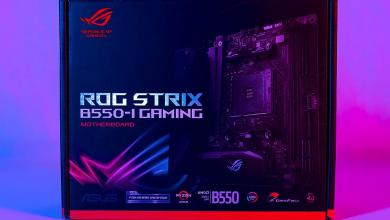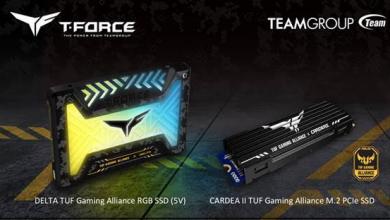A Closer Look at the ASUS ROG Strix RTX 2080 Ti
Based on Nvidia’s TU102 graphics processor, the ASUS ROG Strix RTX 2080 Ti comes equipped with 11 GB of GDDR6 memory on a 352-bit memory bus with a memory bandwidth of 616 GB/s. Nvidia’s TU102 GPU has whopping 4608 Cuda Core, 576 Tensor Cores and 72 RT Cores. The TU102 GPU is based on Nvidia’s 12 NM Turing architecture. The GPU die is a massive 754 mm squared and sports 18,600M Transistors. The only largest GPU we could find listed was the GV100 at 815 mm squares and 21,100M Transistors.
The ROG Strix RTX 2080 Ti is sporting the triple fan Strix cooler that enthusiasts around the world love, myself included. The ASUS ROG Strix RTX 2080 Ti measures 12 ” x 5.13 ” x 2.13 ” or 304.7 x 130.4 x 54.1 mm and weighs in at 1.5 Kgs, or a little over 3.3 pounds. Like the other 20 series cards, the ROG Strix 2080 Ti is a massive 2.7 slot card.
Nvidia’s Turing architecture produces some serious heat. This is why they went with a 2.7 slot design. However, you need more than just a thick heat sink to dissipate all that heat. So, ASUS went with a new design for the fans on their 20 series Strix cards. What they needed was a fans that could meet three requirements. The fans needed to be more powerful and efficient, while still maintaining low decibel levels, even under heavy loads. Their new Axial-Tech Fans were the result.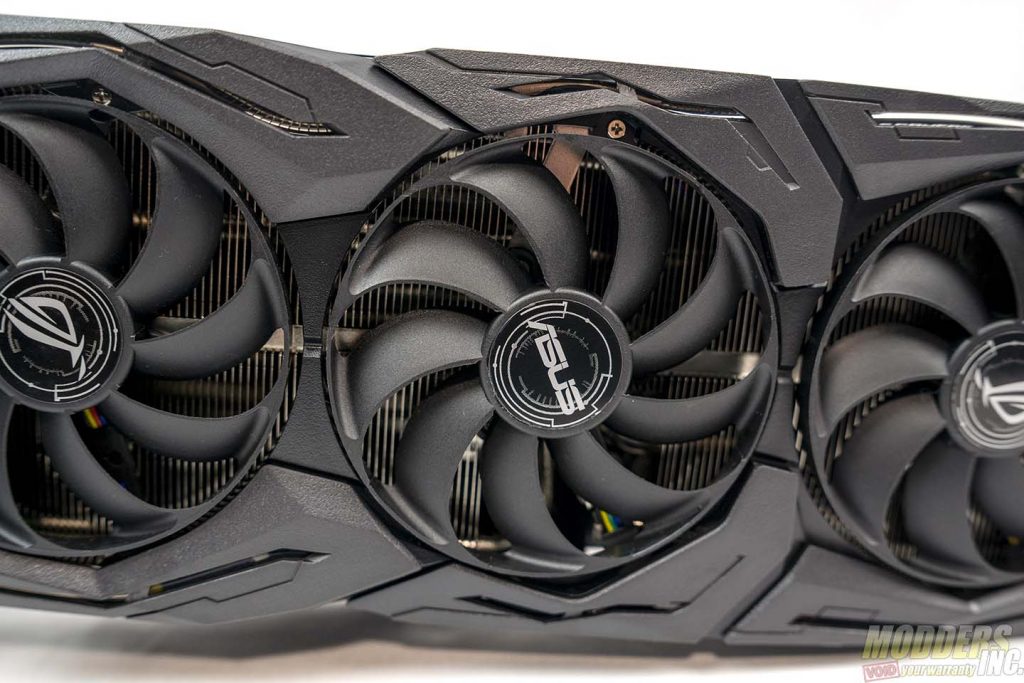
With the new Axial-Fans, ASUS reduced the size of the fan hub to start. This allowed for longer fans blades. In addition, a barrier ring was added to the fans. This increases the strength of the fan. However, it also allows for higher downward air pressure throughout the heatsink array. Also, the Axial-tech Fans have am IP5X dust resistance. This seals off the internal workings of the fans from any dust build-up. Essentially, the Axial-Tech Fans allow the Strix cooler to move more air at higher speeds, without increasing noise levels.
The ROG Strix RTX 2080 Ti uses 0dB Technology from ASUS. What this does is keep the fans from spinning when the GPU temperature is below 55°c. To activate the 0dB mode, simply flip the onboard BIOS switch to Quiet Mode. The stock setting for the Strix RTX 2080 Ti is Performance Mode, so the fans will continue to spin. In fact, the onboard BIOS switch doesn’t affect power limit or clock speed. It just sets the card to a different fan curve and activates 0dB mode.
The ROG Strix 2080 Ti has a brushed aluminum backplate, complete with RGB lighting. Near the back of the card, on the backplate, there is a Republic of Gamers eye logo illuminated by RGB lighting. The RGB lighting in the Strix RTX 2080 Ti can be controlled by the ASUS AURA Sync software. However, ASUS has given us a simpler solution. So many people still have yet to jump on the RGB train. For those who prefer their card without lighting, there is a simple LED on/off button on the backplate, located near the front of the card.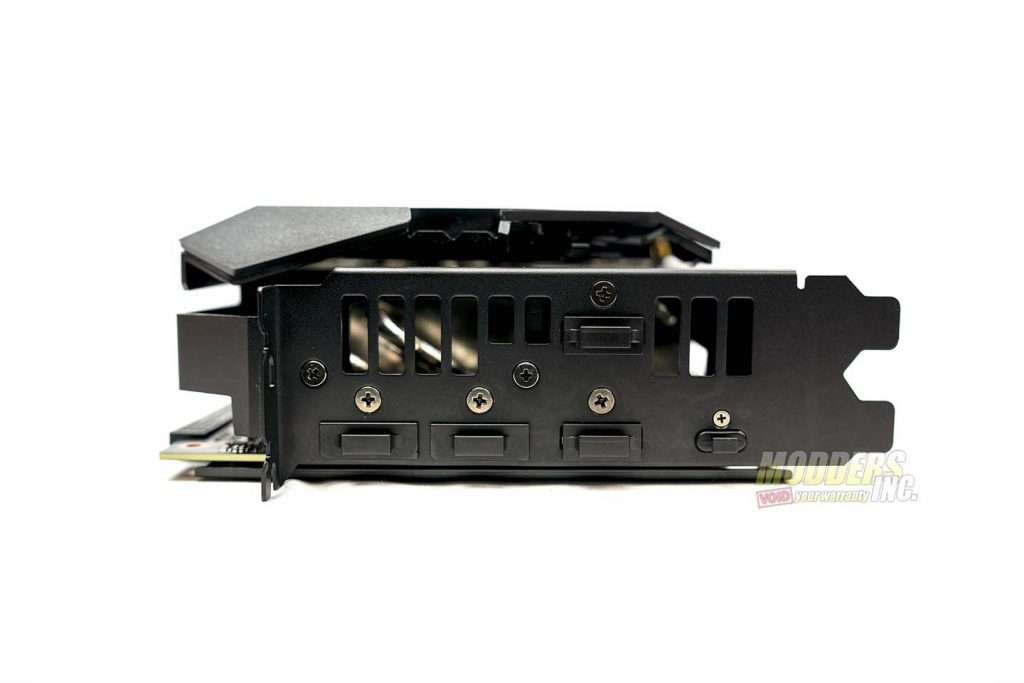
On the rear of the card, there are two four-pin FanConnect II fan headers, as well as a single Aura RGB header. This gives you two additional hybrid-controlled fan headers and an additional RGB header on top of what is already on your board. The fans can sync up with the fan curves on the ROG Strix 2080 Ti. Also, the RGB strip with sync with the lighting on your card and Asus motherboard.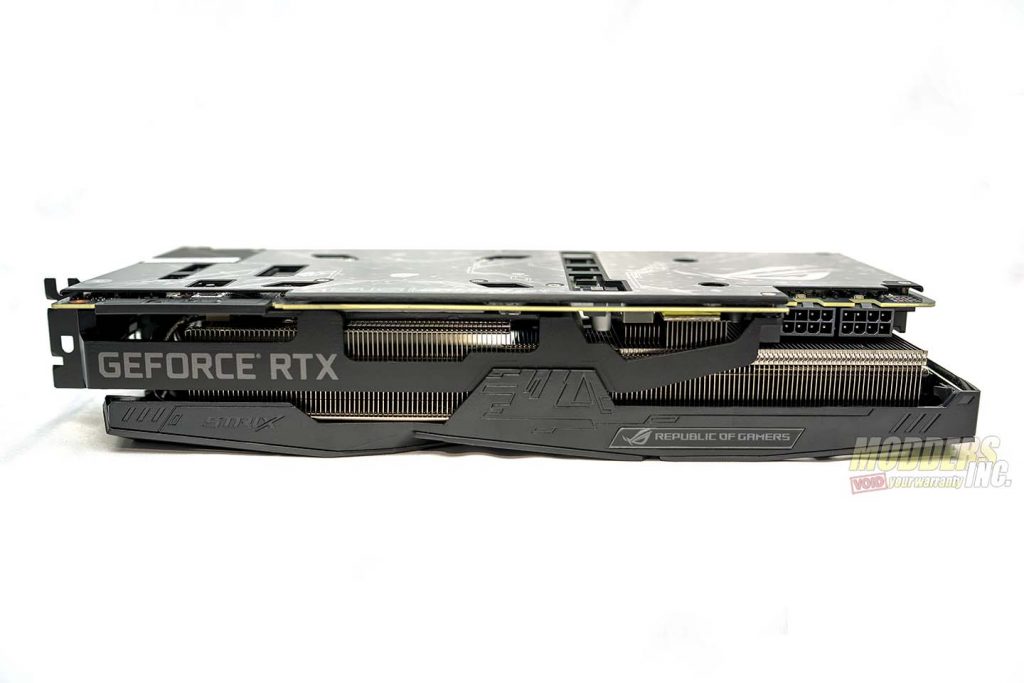
The ROG Strix 2080 Ti comes equipped with two 8-pin power connectors to power the card. Each 8-pin connector has an accompanying LED indicator to let you know the PCIe connector is properly attached. On the bottom edge of the card, we find the traditional PCIe X16 connection and not much else. You can, however, get a glimpse at the massive heatsink that helps to make up the Stix cooler. More on that later.
On the back of the card, there is a series of screws that when removed, will allow you to disassemble the card. In every review, when possible, we tare down the sample we are reviewing. This gives us a better look at how the product is put together, and what components are used to make up that product. Asus always put excellent attention to detail in their ROG products. So, let us rip this card apart and see what makes it tick.
With an average graphics card review, we’d see the card separate into two parts. That’s if we keep the backplate attached to the PCB, which I often do. However, in the case of the ROG Strix 2080 Ti, the card separates into three main components. There are four if you count the IO bracket. The first two are the main parts one would expect when disassembling a graphics card; the PCB with the backplate still attached and the top shroud that includes the heatsink and fans of the Strix cooler.
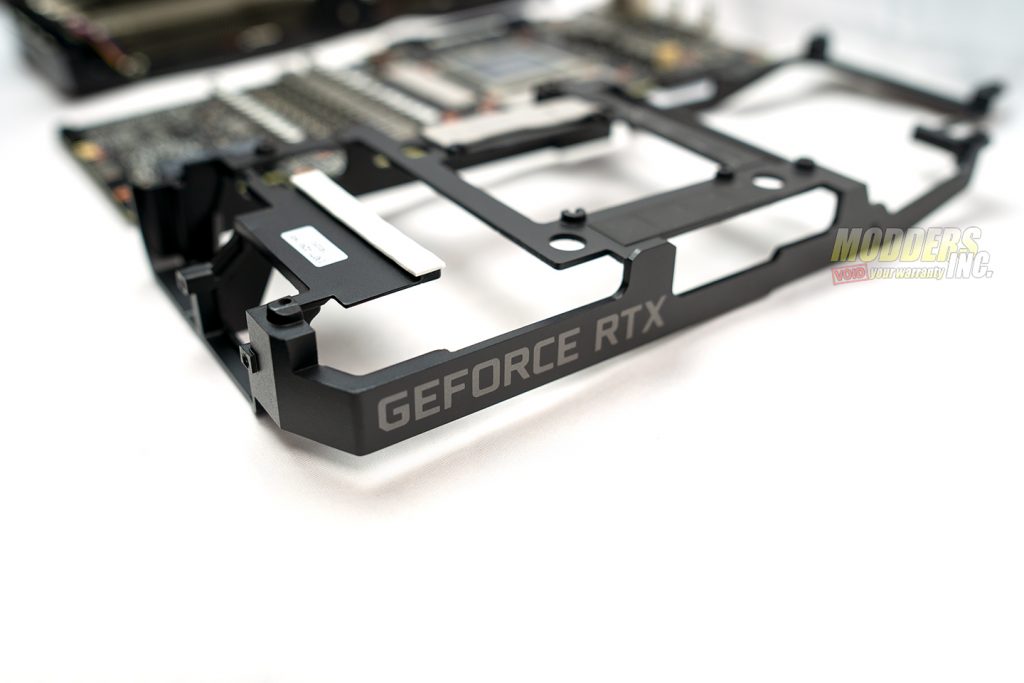
Where earlier iterations of the ROG Strix used Micron memory modules, both Strix 2080 Ti cards we have in our office is equipped with Samsung memory modules. The actual modules bare the numbers K4Z80325BC-HC14. For a more in-depth look at these GDDR6 modules, click here: https://www.samsung.com/semiconductor/dram/gddr6/K4Z80325BC-HC14/
Let’s be honest, people make mistakes. Some more often than others. This is why all ROG Strix graphics cards are produced through Auto-Extreme Technology from ASUS. With their Auto-Extreme Technology, ASUS set a new standard in the way graphics cards are manufactured, essentially eliminating human error in the manufacturing process and going completely automated.
In a traditional manufacturing process, soldering of through-hole and surface-mounted components are performed in separately. However, Auto-Extreme Technology allows all soldering to be completed in a single pass. This helps to reduce the thermal strain on components. This also leads to the use of less harsh chemicals on the components. In the end, we have a lessened environmental impact, lower manufacturing power consumption, and a more reliable product. Even the back of the PCB is smooth. This will eliminate the possibility of cutting to scratching yourself on the back of the PCB if you were to ever disassemble your card that is.
The ROG Strix RTX 2080 Ti features Super Alloy Power II. This includes premium alloy chokes, solid polymer capacitors and an array of high-current power stages. The VRM on the ROG Strix 2080 Ti is a 16+3 phase power delivery system. This includes 16 phases for the GPU and 3 phases for memory, which is insane.
The ROG Strix 2080 Ti comes with six nickel-plated copper heat pipes that run through the complete length of the heatsink. The heatsink is one large fin array, with a small cutout near the center, where four of the heat pipes enter the fin array. The other two heat pipes enter at the front of the card, nearer to the nickel-plated copper cold plate that contacts the GPU die.
The heatsink on the ROG Strix 2080 Ti is even made for maximum contact to the components on the PCB that generate the most heat. Ther are several cut-outs throughout the heatsink to ensure each component makes contact with the heatsink. There are thermal pads throughout the heatsink that contact the chokes, capacitors, and Mosfets, increasing heat dissipation throughout the cards.
Now that we’ve taken a look at the components that make up the ROG Strix 2080 Ti, let’s see how well this beast of a card performs.
